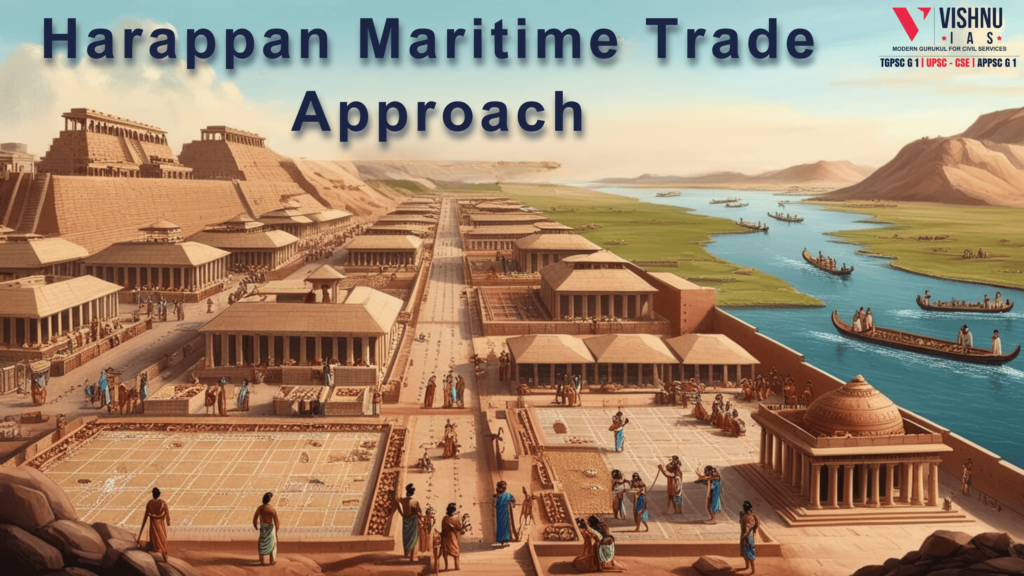Harappan maritime trade Approach
⦁ Introduction: add few specific points regarding the Harappan maritime trade
⦁ Body: add point wise its significance
⦁ Conclusion: add its contemporary context
INTRODUCTION
The Harappan civilization, also known as the Indus Valley Civilization, had a well-developed maritime trade network that played a crucial role in its economy and cultural exchanges.
BODY
Key points about Harappan maritime trade:
⦁ Ports and Trade Routes: The Harappans established several ports along the coastlines of present-day Gujarat and Sindh. Notable ports included Lothal, Dholavira, and Sutkagen-dor. These ports facilitated trade with distant regions such as Mesopotamia, the Persian Gulf, and the Arabian Peninsula.
⦁ Goods Traded: The Harappans exported a variety of goods, including cotton textiles, beads, pottery, and agricultural products. In return, they imported raw materials like metals, gemstones, and other luxury items.
⦁ Lothal: One of the most significant Harappan ports was Lothal, located in present-day Gujarat. It featured a sophisticated dockyard and was strategically positioned to connect inland trade routes with maritime ones. Lothal’s dockyard is considered one of the earliest known in the world.
⦁ Cultural Exchanges: The maritime trade network facilitated not only economic exchanges but also cultural interactions. Harappan seals and artifacts have been found in Mesopotamia, indicating a robust exchange of goods and ideas.
⦁ Technological Advancements: The Harappans demonstrated advanced knowledge of shipbuilding and navigation. Their ability to construct and manage ports, along with their understanding of maritime routes, highlights their technological prowess.
The Harappan civilization’s maritime trade was a remarkable achievement for its time, but it faced several challenges and limitations that are still relevant today.
Challenges and Limitations
⦁ Geographical and Climatic Changes
⦁ Technological Constraints:
⦁ Economic and Political Factors
⦁ Infrastructure and Logistics
⦁ Environmental Impact
CONCLUSION
⦁ The Harappan maritime trade network was a testament to their ingenuity and played a significant role in their economic and cultural development.
⦁ The Harappan maritime trade network was a pioneering effort that laid the groundwork for future maritime activities. While the challenges they faced were different in scale and nature, many of the underlying issues remain relevant today. Addressing these challenges requires a combination of technological innovation, sustainable practices, and international cooperation.
Anthropology Full Course at Vishnu IAS Academy
What does Course Offer?
- 4 Months (250+ Class Hours)
- Online (App + Web) / Offline / Hybrid Mode of Classes
- Live + Recorded Videos Access For 1 Year
- 2 Hour Live Class From Monday to Saturday (1.5 Hours for Class + ½ Hour for Doubt Solving)
- Foundation to Advanced Level of Teaching
- Simple and Integrated Content
- One Stop Solution Books
- Regular Value Added Content
- Current Affairs & Case Studies Modules
- Daily Answer Writing Practice
- Weekly Grand Tests On Sundays & Evaluation With Guidance and Topper Will be Rewarded
- 500+ Model Answers
- 9 AM – 9 PM Support System
- Free GS Current Affairs
- Free Interview Guidance for Anthropology


